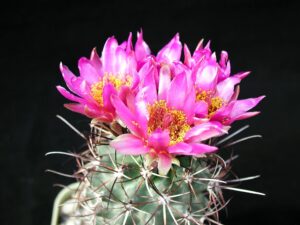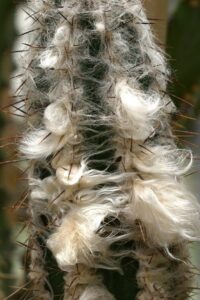The Pink Night Blooming Cereus, renowned for its ethereal beauty and nocturnal bloom, is a captivating addition to the desert flora. This succulent, scientifically categorized under the genus _Peniocereus_, reveals a remarkable spectacle under the moonlight, inviting admiration from enthusiasts and casual observers alike. In exploring the allure of this phenomenal plant, we will delve into its botanical characteristics, cultural significance, and the unique ecological niche it occupies in its native habitat.
Understanding the morphology and attributes of the Pink Night Blooming Cereus is essential. Typically, this cactus is characterized by its long, slender stems that can reach lengths of up to several feet. The stems are ribbed, which adds to their unique visual appeal. The plant is largely nocturnal, remaining dormant throughout the day while conserving water. Its striking nocturnal flowers, which can measure up to a foot in diameter, open during the cool evenings, revealing delicate pink or white petals. As dawn approaches, these stunning blooms wither away, leaving no trace of their ethereal splendor. This phenomenon is not merely beautiful but serves an important reproductive purpose, as these flowers are primarily pollinated by nocturnal creatures such as moths and bats.
The significance of the Pink Night Blooming Cereus extends beyond its aesthetic appeal; it embodies a complex interplay of nature and culture. In various Indigenous cultures of the American Southwest, this cactus has been revered for its medicinal properties and practical applications. Traditionally, the flowers, rich in nectar, are not only a food source for pollinators but have also been utilized by local communities for culinary preparations, particularly in desserts and beverages. Furthermore, the plant’s waxy skin and spines serve as a natural barrier, making it an incredible specimen that thrives in the harsh desert environment. This tenacity is often seen as a metaphor for resilience and adaptation, themes widely celebrated in local folklore and art.
Exploring the ecological role of the Pink Night Blooming Cereus unveils its significance within its desert ecosystem. As a member of the cactus family, it showcases unique adaptations that enable survival in arid climates. Its water-conserving abilities and shallow root system allow it to absorb moisture effectively from scarce rainfalls. By providing sustenance to various pollinators at night, it assumes a crucial role in maintaining the balance of local ecosystems. These relationships highlight the interdependency of flora and fauna, underlining the importance of preserving natural habitats that support such biodiversity.
Within the realm of horticulture, the Pink Night Blooming Cereus has captured the fascination of many gardeners and plant enthusiasts. Successful cultivation of this cactus requires an understanding of its particular needs, including appropriate lighting, soil composition, and watering practices. The plant flourishes in well-draining soil with a slight acidic pH, promoting healthy root development and preventing rot. During its growing season, from late spring to early summer, regular watering—without over-saturation—is necessary to simulate its natural environment. Growers often recommend keeping the cactus in a spot with full sun exposure to encourage vigorous growth and flowering. As this species is sensitive to frost, those in colder regions may opt for container cultivation to facilitate seasonal movement indoors during winter months. For committed enthusiasts, the Pink Night Blooming Cereus presents an opportunity to experience the extraordinary beauty of nocturnal blooms right in their own backyards.
Aside from cultivation, the Pink Night Blooming Cereus inspires a sense of community among aficionados. Various clubs and associations have emerged, focusing on the conservation of desert flora and the specific care of cacti. These groups often host workshops, share propagation techniques, and conduct field trips to observe this remarkable plant in its natural habitat. Such communal activities not only enrich the knowledge of members but also help foster a greater appreciation for the intricate ecosystems within which these cacti reside.
Moreover, the allure of the Pink Night Blooming Cereus serves as a catalyst for environmental awareness. With the ever-increasing threats posed by climate change and habitat destruction, the conservation of cacti and their ecosystems has gained traction. Educational programs and initiatives aimed at sustaining native plants advocate for responsible gardening practices and habitat preservation. The Pink Night Blooming Cereus, due to its beauty and the integral role it plays in its ecosystem, is often highlighted as a symbol of these conservation efforts.
In summary, the Pink Night Blooming Cereus is much more than a striking visual spectacle of the desert. Its fascinating morphology, cultural significance, ecological role, and presence in horticulture illustrate a multi-faceted tapestry that enriches our understanding of the natural world. As efforts to conserve such unique species continue to grow, the Pink Night Blooming Cereus stands as a testament to the resilience of life in extreme conditions—a stunning secret of the desert waiting to be unveiled.





Leave a Comment